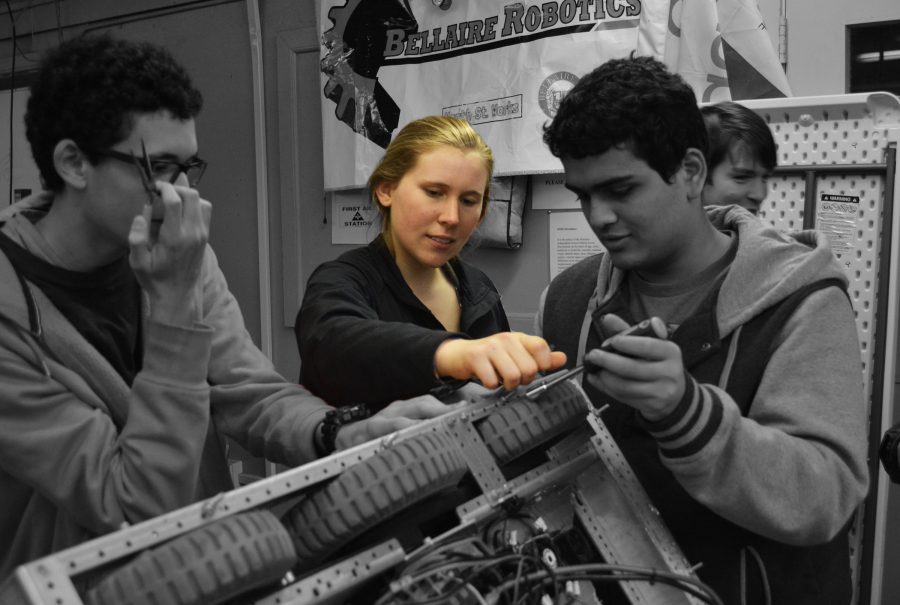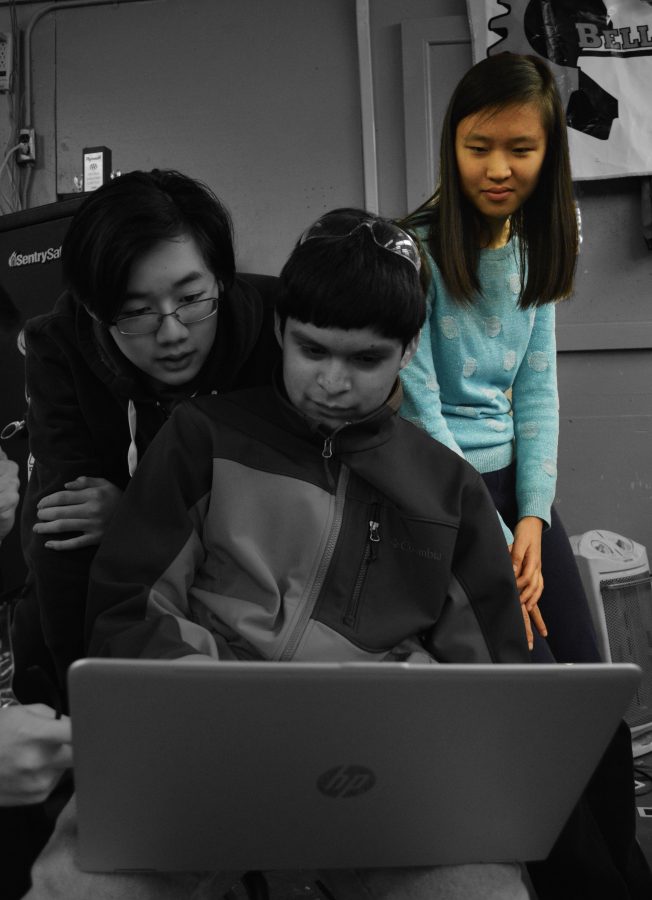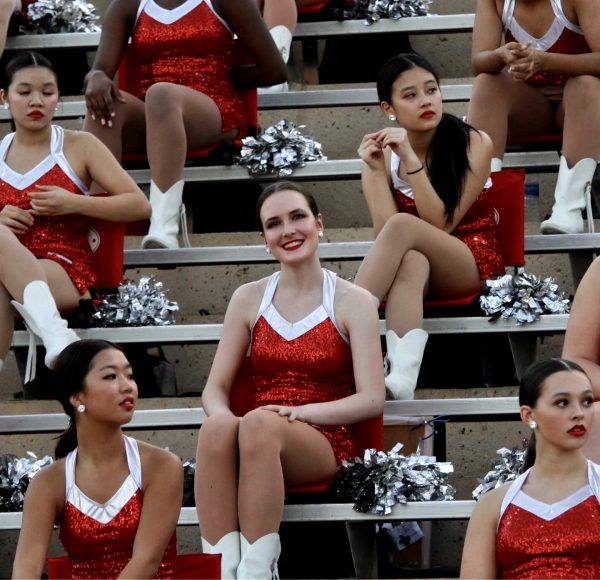Girls in robotics remark on increased diversity
Sophomore Andrew Wu, sophomore Antonio Ruiz and junior Jenny Xin collaborate on robot design.
Two young girls walked into the auto shop their freshman year of high school. Glancing around, they saw groups of people toying with mechanical parts and drawing blueprints. Excited, they waded through the cars to the chaotic boys. It was clear that this as not the LEGO robotics they had done in a classroom in middle school. Jingyi (Jenny) Xin was one of those girls.
Now, Xin’s junior year, she was the head of intake design for the 206 bot. As a middle school student, she was a member of the T.H. Rogers robotics team. She joined the team as a freshman because she loved engineering, but she noticed something interesting about the group.
“There are at least two, probably three times as many guys on the robotics team,” Xin said. “I do not feel uncomfortable anymore, but I would definitely like it if more girls joined, if only to have more women in Science, Technology, Engineering and Mathematics (STEM)! I know from experience that having another friend on the team who was a girl helped immensely.”
Junior Tina Dang, who also joined robotics in her freshman year, quit as a sophomore and has now rejoined he team, had a different experience. She noted that a majority of the team members this year were different than those on the team during her freshman year. Xin hypothesized that this change was sparked by the girls proving their competence in the years prior.
“People do not really assume each other’s abilities on our team as we are so diverse in the things that we learn and participate in,” Dang said. “Some people code, others build, others deal with electronics and wiring. Because most of the team is consistently new every year, the leaders are always open to helping others out and to teaching us about different topics.”
Though Dang felt that the girls were appreciated for their input, she still wished that more girls were a part of the team. Like Xin, she thought that having a significant amount of girls on the team would encourage even more to join. Because there are so few girls in the club, others tend to shy away from joining because they do not want to feel alone.
“I do kind of feel uncomfortable as one of the few girls on the team because I have to constantly assert myself and make my presence known,” Dang said. “If there were more girls, I would probably feel as if they would not judge me as much since we would be in it together.”
The sense of unity among females in robotics stems from the stigma that surrounds their participation, according to Xin. She explained that gender stereotypes affected the way that people chose their hobbies, perpetuating the reputations of male or female activities.

Sophomore Eric Verchere, junior Sarah Macia and senior Vedant Chopra work on a robot for competition.
“I do feel that there is a stigma against women in STEM,” Xin said. “Among other things, sometimes I can tell my mom is still slightly against me doing robotics. Many people still believe that boys are better at math, but it has actually been scientifically proven otherwise. It is barely noticeable, at least consciously, but girls still tend to gravitate towards clubs and activities that have already been marked as socially acceptable. This is why girls still shift away from extracurricular activities such as robotics, wrestling, rugby, and football.”
The girls on robotics have worked hard to prove themselves as valid members of the team. As both an underclassman and a female, they were viewed as inexperienced and therefore ignored. In one instance, Xin presented a design idea that would use gears rather than pneumatics to lift the base of a cart. The team ignored her, but when an older boy expressed the same idea, the plan was praised. Despite obstacles like this one, the girls continued to demonstrate their knowledge and skill.
“I have stuck through with robotics and taken the initiative to learn more things,” Xin said. “We have a mentor who really saved me, because during the past few years, I would always go to him and ask him about robotics related things.”
With the help of advisors and friendly upperclassmen, the girls have earned their right as valued members of the team. They have also paved the way to a more inviting robotics environment, with three freshmen, two sophomores and five junior girls on the team.
“They definitely used to treat me differently, but as I’ve gained more experience, I no longer feel any bias,” Xin said. “I love my robotics team now. They are doing amazing, and I am happy that all the freshmen are being included.”











